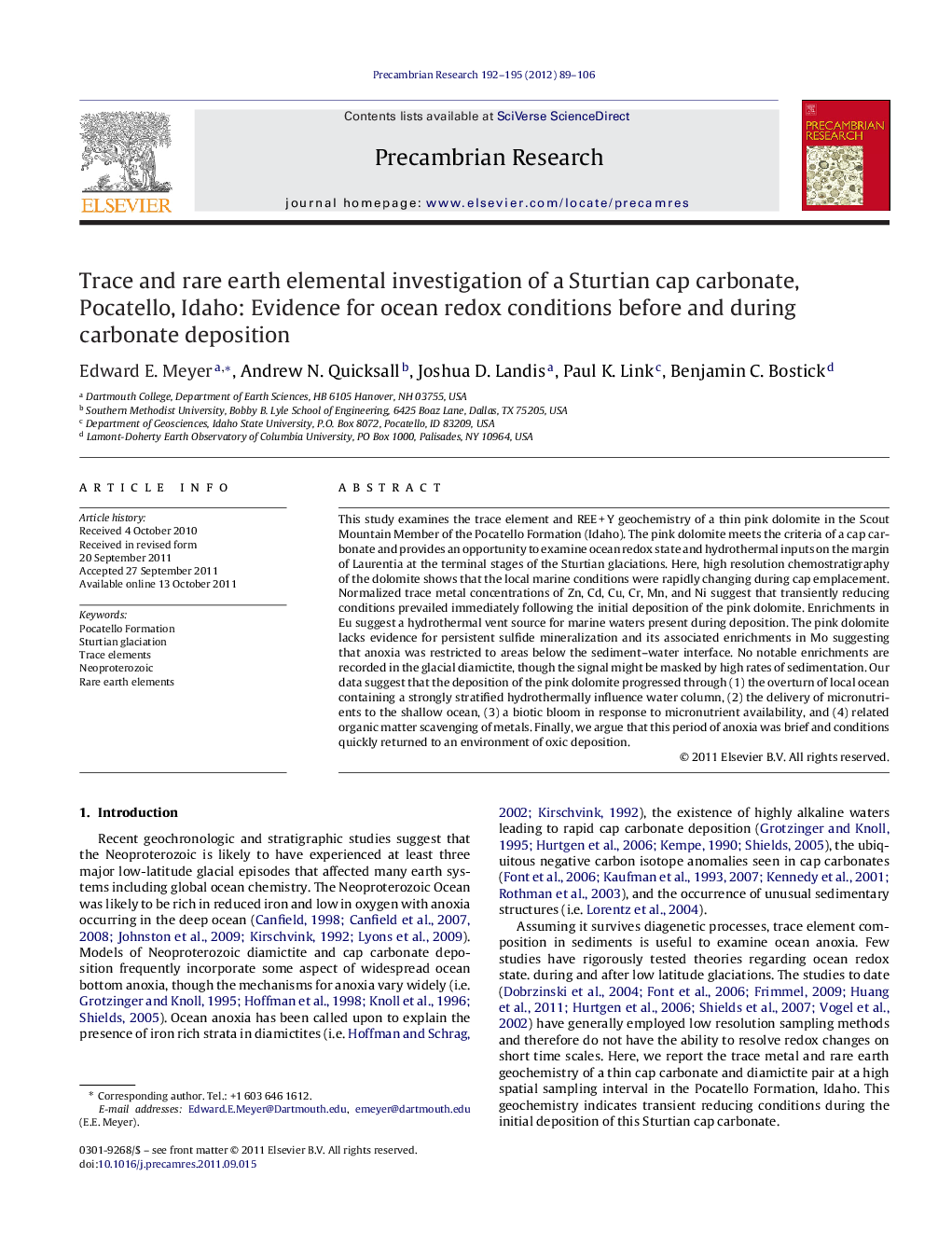| Article ID | Journal | Published Year | Pages | File Type |
|---|---|---|---|---|
| 4723632 | Precambrian Research | 2012 | 18 Pages |
This study examines the trace element and REE + Y geochemistry of a thin pink dolomite in the Scout Mountain Member of the Pocatello Formation (Idaho). The pink dolomite meets the criteria of a cap carbonate and provides an opportunity to examine ocean redox state and hydrothermal inputs on the margin of Laurentia at the terminal stages of the Sturtian glaciations. Here, high resolution chemostratigraphy of the dolomite shows that the local marine conditions were rapidly changing during cap emplacement. Normalized trace metal concentrations of Zn, Cd, Cu, Cr, Mn, and Ni suggest that transiently reducing conditions prevailed immediately following the initial deposition of the pink dolomite. Enrichments in Eu suggest a hydrothermal vent source for marine waters present during deposition. The pink dolomite lacks evidence for persistent sulfide mineralization and its associated enrichments in Mo suggesting that anoxia was restricted to areas below the sediment–water interface. No notable enrichments are recorded in the glacial diamictite, though the signal might be masked by high rates of sedimentation. Our data suggest that the deposition of the pink dolomite progressed through (1) the overturn of local ocean containing a strongly stratified hydrothermally influence water column, (2) the delivery of micronutrients to the shallow ocean, (3) a biotic bloom in response to micronutrient availability, and (4) related organic matter scavenging of metals. Finally, we argue that this period of anoxia was brief and conditions quickly returned to an environment of oxic deposition.
